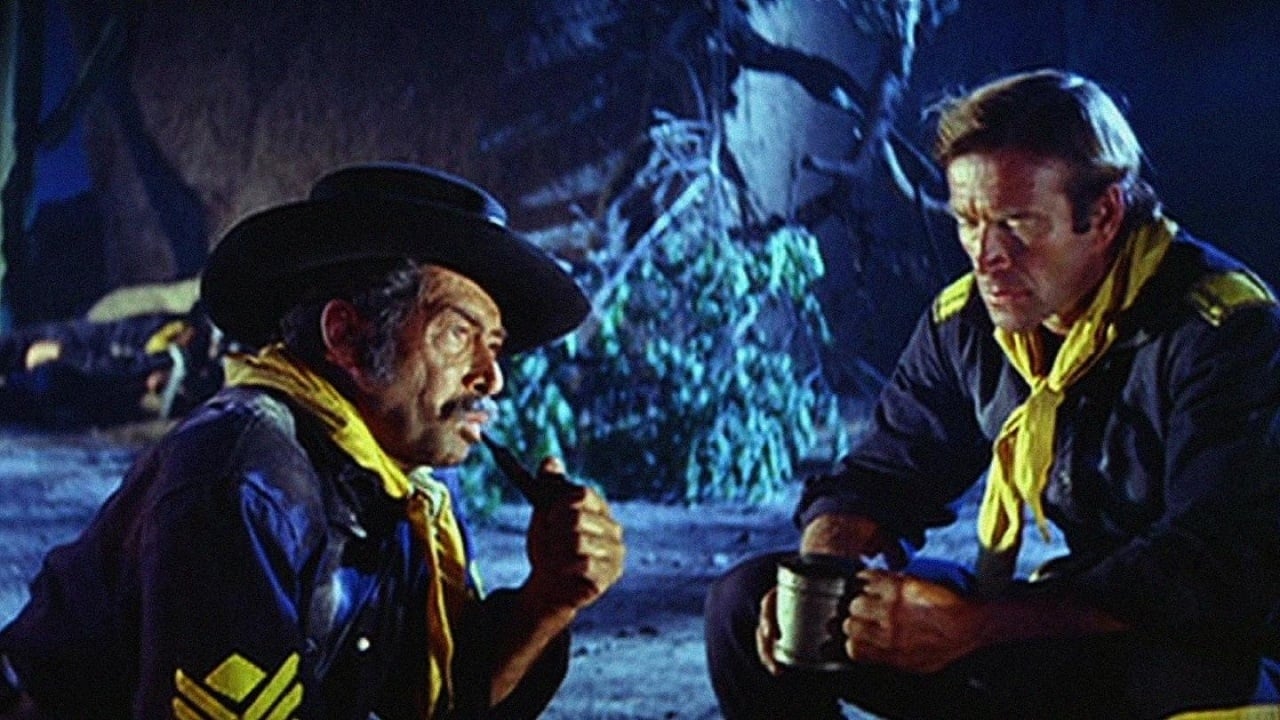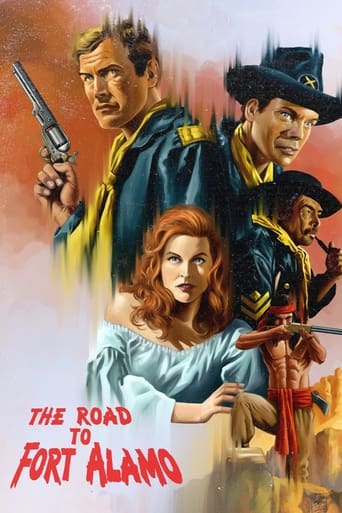

Italian movie director Mario Bava is best known for his horror movies. But during his career he found time to direct other kinds of movies, including spaghetti westerns, "The Road To Fort Bravo" being one such example. The movie is pretty unknown, and it's easy to see why. Throughout it has the feeling of a slapdash production. The budget was obviously pretty low, so the production values are pretty tacky, from the costumes to the poor special effects. Bava seems unable to show any visual flair on this project, except for a few scenes that take place in caves. But the main problem with the movie is the script. It feels like a first draft, with many scenes feeling rushed or unfinished. This quickie enterprise is capped with a pretty bad musical score by Piero Umiliani, which consists of 60s style music at its worst. The best that can be said of the movie is that its running time is fairly short.
... View MoreThis is my second time watching the first of Bava's infrequent (and most atypical) ventures into Western territory. Coming at the start of the genre's idiosyncratic "Euro" (and, in the long run, highly influential) overhaul, it obviously feels the least like your typical "Spaghetti" Western – even if, truth be told, MINNESOTA CLAY from the same year (on which Bava is reputed to have worked but which is credited to one of the formula's undisputed masters i.e. Sergio Corbucci) is more successful in this regard! Anyway, the movie under review is considered among Bava's minor efforts – and rightly so; yet, it is nowhere near as bad as some make it out to be and, to my mind, preferable to his comedy-oriented last entry in the field, namely ROY COLT AND WINCHESTER JACK (1970; with which, as it happens, I will be re-acquainting myself presently). As I said, the film mainly looks to the American model – albeit following its more routine examples – for inspiration, but that is not necessarily a bad thing. Interestingly, Bava starts off proceedings with an inconsequential 'prologue' (featuring favourite "Euro-Cult" villain Gerard Herter) involving a crooked card game and an amusingly sleepy bartender. Rugged (and immensely hirsute) hero Ken Clark – who would return for the recently rewatched SAVAGE GRINGO (1966), which Bava helmed albeit without credit – is a Southern landowner who lost everything to a Northern onslaught during the Civil War, and whom he now plans to get back at by posing as a Union officer and 'withdraw' a cache of money from the bank destined to the enemy forces! Unluckily for him, the associates he picks up for the job – led by another familiar face, Michel Lemoine – prove greedy and leave him and his closest ally for dead or, more precisely, at the mercy of the marauding Osage Indians! Eventually, the two men are saved by a Southern Army wagon train bound for the titular outpost so that they are forced to keep up the military disguise; ironically, they are soon joined by Lemoine himself, the sole survivor of the renegade gang who also had a brush with the redskins but is still in possession of half the stolen sum. Clark, whose uniform bears the higher rank, now delights in rubbing his treacherous ex-partner the wrong way – but, in fact, neither has given up on the loot and each intends making off separately with it at some point. However, the Osage come down en masse on the small unit (which includes a by-the-book Colonel, a wily Second-in-Command soon in on Clark's ruse but willing to keep it to himself, the priggish wife of the Colonel at the fort and even a female prisoner – earthy redhead Jany Clair naturally comes to fall for the brawny charms of, and senses a misfit kinship with, our protagonist – being escorted there for trial) and they have to stay on and fight it out! A nice touch has the Indians make flower arrangements via the 'confiscated' paper money (which to them is useless) and send them floating down river in order to lure avaricious soldiers out into the open and slay them; this idea then comes into play again at the inevitable showdown between Clark and Lemoine.While Bava was clearly ill-at-ease within this particular genre (unflatteringly billed in this instance as John Old), here at least he incorporates his recognizable colour palette to effective use; Carlo Savina's score, then, includes the token ballad warbled over the opening credits and, surprisingly, cues which bear an uncanny resemblance to those composed for the soundtrack of the 1957 Mexi-Horror classic THE VAMPIRE!
... View MoreFirst of all I am a fan of Italian films but "the road to Fort Alamo" is one of the worst Italian western that I've seen. It was shot without means. The interiors have a fictitious background with a blue light and fictitious cactus so as to simulate the desolate and barren moorlands of Texas or Arizona, but any clever viewers can note that the real vegetation is made of oak (Q. pubescens) and other plants typical of European climate. Some shots (cowboys that are riding) are accelerated, Bud, the leading actor, cannot ride, therefore he was always replaced by a double. The Indians are awkward, always shot at a distance. I admit the shots are the only thing which make this movie credible, but the others contemporary films like "le pistole non discutono", "preparati la bara" are masterpieces compared with this one. I give it 4 out of 10.
... View More"La strada per Fort Alamo" was shot in Italy, not in Spain like most Italian westerns. Director "John Old" alias Mario Bava was obviously influenced by the John Ford classics such as "She Wore A Yellow Ribbon", all just in a much cheaper B-movie style; it has almost nothing in common with the typical "Django pays for your funeral" kind of western. This movie has a good script with good dialogs; it's about a bandit who has to pose as an army officer after he got caught wearing a stolen uniform. When Indians attack, he gets opportunity to show he is a brave good guy. One word to the disappointed Bava fans: surely the master had to earn a living, too, and this is what he did for it. You don't shoot masterpieces like "Danger: Diabolik" or "Mask of Satan" every week. More important than such comparisons is that "La strada per Fort Alamo" is a good quality western in a traditional way, and if you don't expect more than that, it's well worth watching.
... View More